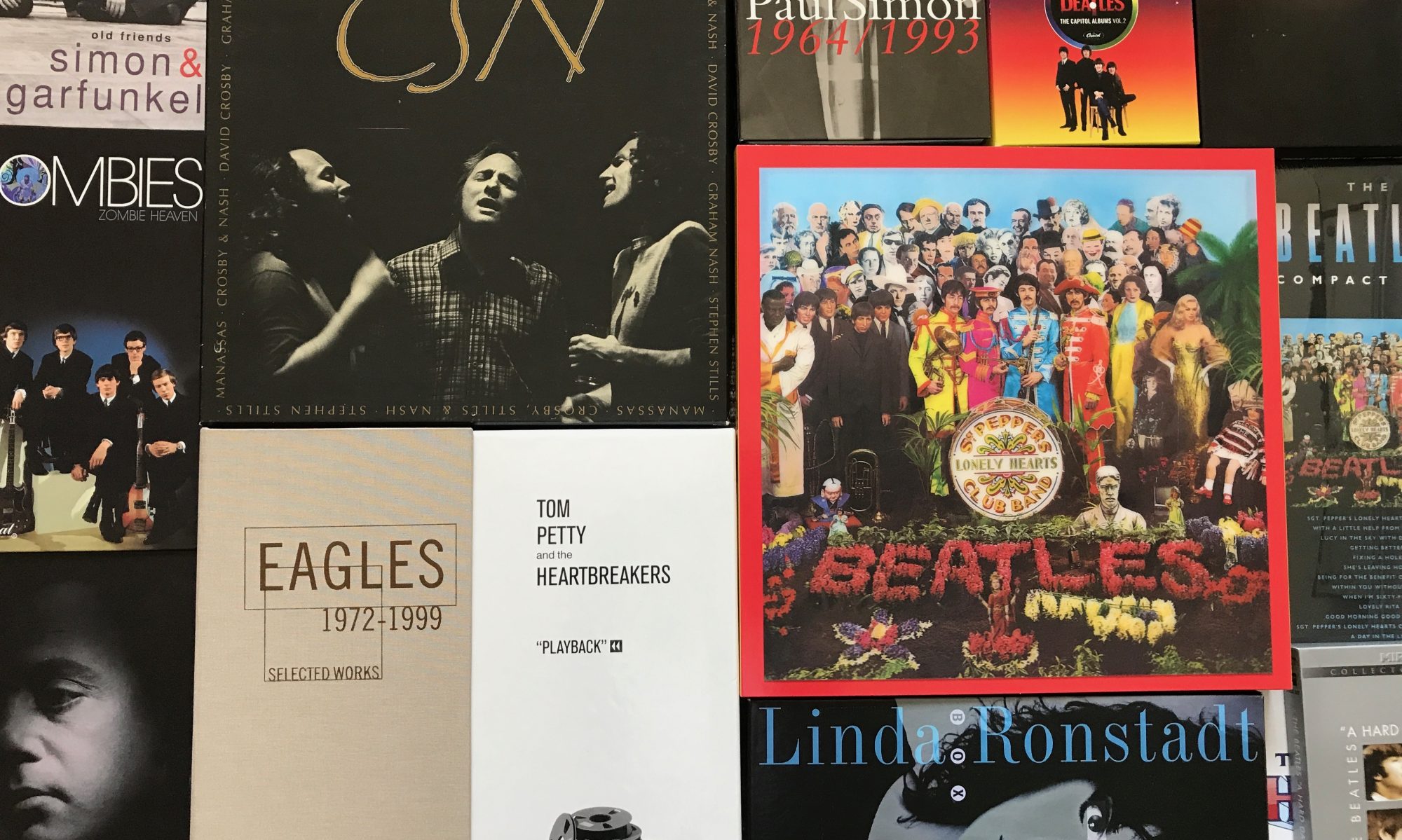He doesn’t seem to get the credit he deserves.
If it weren’t for Stephen Stills writing the 1967 #7 hit “For What It’s Worth (Stop, Hey What’s That Sound)”, most people wouldn’t have heard Buffalo Springfield.
The group’s other star-to-be was Neil Young, but “For What It’s Worth” was their only hit. Some other Buffalo Springfield songs were later played on Album Oriented Rock FM stations, including Stills’ “Rock & Roll Woman” and “Bluebird”.
Next came Crosby, Stills & Nash in 1969. Stills was a dominant force on the album, with “Suite: Judy Blue Eyes”, “Helplessly Hoping”, “You Don’t Have To Cry”, “49 Bye Byes” and “Wooden Ships” (which he had written with David Crosby prior to CSN). But it wasn’t just songwriting and singing, Stills played most of the instruments (only some of the drumming) on all but two tracks. This takes nothing away from the great songs and contributions by David Crosby and Graham Nash…it was just how the first album was done.
The follow up album was Crosby Stills Nash & Young’s Deja Vu in 1970. Besides lots of lead guitar and other instrumental work, Stills’ main contributions included “Carry On/Questions”, “4 + 20”, and a great lead vocal on Joni Mitchell’s “Woodstock”.
Then it was solo time.
 The albums Stephen Stills and Stephen Stills 2 were released in 1970 and 1971. Among the tracks were “Love The One You’re With”, “Do For The Others”, “Change Partners”, “Nothin’ To Do But Today”, “Sugar Babe”, and “Know You Got To Run”. Stills was not really a singles artist, but the albums did well, reaching #3 and #8 respectively. Next came one of the best albums of his career.
The albums Stephen Stills and Stephen Stills 2 were released in 1970 and 1971. Among the tracks were “Love The One You’re With”, “Do For The Others”, “Change Partners”, “Nothin’ To Do But Today”, “Sugar Babe”, and “Know You Got To Run”. Stills was not really a singles artist, but the albums did well, reaching #3 and #8 respectively. Next came one of the best albums of his career.
Manassas was a group of top musicians, as assembled by Stephen Stills. It was Stephen Stills (lead guitar & keyboards), Chris Hillman (of the Byrds) [guitar & mandolin], Dallas Taylor (Drums), Paul Harris (keyboards), Fuzzy Samuels (bass), Al Perkins (pedal steel & guitar), and Joe Lala (percussion). This is a great 2-record album filled with solid songs, including “It Doesn’t Matter”, “So Begins The Task”, “Johnny’s Garden”, “Don’t Look At My Shadow”, “Blues Man”…and many more. It’s a wonderful mix of Rock and Country Rock. Critics praised the album.
In fact, I remember reading the glowing review in Rolling Stone, and right next to it was the review of the Graham Nash David Crosby album. It too got a great review, and is probably the best album by Crosby & Nash. It includes “Southbound Train”, “Games”, “Immigration Man”, “Page 43” and “The Wall Song”.
But wait, there’s more. Neil Young also released his Harvest album. The three albums were all in the Top-10 at the same time in June of 1972. Manassas (a more expensive double album) hit #4, Graham Nash David Crosby also peaked at #4, and of course Harvest hit #1. It was amazing that the members of CSN&Y could all have so much simultaneous success.
Stills “solo” studio projects included another Manassas album Down The Road (1972), Stills (1975), Illegal Stills (1976), Thoroughfare Gap (1978), Right By You (1984), Stills Alone (1991), Man Alive! (2005), a collection of 1968 demos Just Roll Tape (2007), some 1972 Manassas outtakes Pieces (2009), and an album with Judy Collins Everybody Knows (2017).

(Photo I took in 1977 at a CSN concert)
Of course sprinkled in were CSN& sometimes Y albums: CSN (1977), Daylight Again (1982), American Dream (1988), Live It Up (1990), After The Storm (1994), and Looking Forward (1999).
In a July, 2021 interview with American Songwriter, David Crosby said of Stephen Stills… “He was he best one in the band. Best singer, best songwriter, best guitar player. I admire him tremendously.”
One thing that’s never been released is a really good collection of the best music of Stephen Stills’ career. There is a box set, Carry On, but some of the song selections and versions are poor choices. It’s also too sprawling and expensive. Only the most hardcore fans will have purchased it.
Here’s a suggested career retrospective that would be considered a double album, would fit on one CD, and would attract more music fans.
Stephen Stills Career Best:
- For What It’s Worth…Buffalo Springfield
- Rock & Roll Woman…Buffalo Springfield
- Bluebird…Buffalo Springfield
- You Don’t Have To Cry…CSN
- Suite: Judy Blue Eyes…CSN
- Helplessly Hoping…CSN
- 4 + 20…CSN
- Carry On/Questions…CSN
- Woodstock…CSN&Y
- Find The Cost Of Freedom…CSN&Y
- Love The One You’re With
- Do For The Others
- Change Partners
- So Begins The Task…Manassas
- It Doesn’t Matter…Manassas
- Johnny’s Garden…Manassas
- Right Now…Manassas
- Blues Man…Manassas
- As I Come Of Age (w C&N)
- See The Changes…CSN
- Southern Cross…CSN
- Daylight Again…CSN
- Treetop Flyer
This gives a good look at many of the main contributions Stephen Stills has made to the world of music. Only 6 of the 23 songs are on the CSN Greatest Hits album, so this album would do a much better job of reflecting his career and letting people get to know his music. Still’s impressive songwriting, excellent guitar playing, and distinctive vocals demonstrate he deserves to be included in the discussion of the best singers, songwriters, and musicians. Stephen Stills is much more than one-third of a great group.
Bonus: Here’s a link to the story of Stephen Stills’ “Treetop Flyer”.
https://ontherecords.net/2022/06/stephen-stills-treetop-flyer/
Update 2023: Stills released an historic live album on April 28th, 2023.

Here’s the link to info and my review of Stills’ live album: https://ontherecords.net/2023/04/stephen-stillslive-at-berkeley-1971-review/
















































































